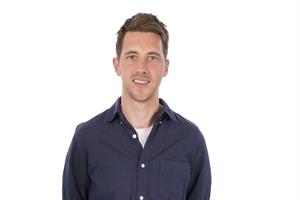Sky Media is looking to partner with brands and agencies to test how a newly developed framework can increase advertising effectiveness.
In collaboration with research consultancy Differentology, the broadcaster has created the ADsorption Index which measures how absorbed audiences are by different types of content. This clearly has implications for the ads that are played within it.
News of the new measurement framework was revealed during a Campaign webinar where Sarah Jones, director of planning at Sky Media, Mark James, founder and chief executive of Differentology, and Matt Hill, Thinkbox’s director of research & planning, discussed the ADsorption Index with Campaign deputy editor Gemma Charles.
In order to create the index, Sky and Differentology conducted research looking at how viewers engage with content in a time of increasing fragmentation.
Jones argued that while fragmentation presents challenges for advertisers, it is also an opportunity, because when people choose the content they watch, that leads to stronger engagement which, in turn, increases engagement with the ads within that content.
While TV content has never been more popular, the fragmentation of services and ways of watching means there has been a 47% reduction in the number of shows reaching more than two million viewers between 2013 and 2032, Jones said. She encourages advertisers to cast their nets wider of genres to capture a wider range of passion points to help maximise reach.
Meanwhile, James explained that when it comes to TV, SVOD and BVOD, most measurement tools focus on eye tracking, which has its limitations due to TV being more than just a visual medium. With music, dialogue and sound effects adding to the experience, a better way to measure AV content is needed, James said.
Sky and Differentology have created absorption scores for content by looking at five key drivers - how focused, engrossed and captivated people are and the value the content brings them in terms of how passionate they are about it and how memorable it is.
Drama was identified as the genre with the highest absorption score, followed by documentaries and films, with BVOD the most absorbing platform.
The plan is now to use the ADsorption Index to measure the attention people pay to ads as well as the surrounding content, to paint a fuller picture of an ad’s effectiveness.
According to James, both low and high absorption can be useful to advertisers. On the higher level, the viewer’s full attention is on the content and the ads, which is likely to bring more immediate results, while low absorption helps build brand familiarity over time.
Jones explained that the next step is to use the same metric to look at advertising absorption, and that Sky is actively looking for brands to get involved.
“This is probably the first time anyone is using one single metric to look at content as well as advertising, and that means there's an opportunity to find congruence in terms of absorption levels,” she said.
Sky and Differentology are currently analysing the data collected on content absorption, and the plan is to continue to conduct research to create an even bigger dataset.
“For any brands looking to run a campaign soon, we’d love to test the ADsorption Index on your advertising and see how it works against the absorption of the content that it’s played within,” said Jones.
She predicted that this will be “increasingly key to media planning” as there are more levers to pull to drive effectiveness for clients.
She continued: “The ADsorption Index helps add a layer of why you should choose some of the different channels and platforms for targeting your audience. There’s space for everybody, it’s not just about the really big shows.”
The ADsorption Index forms a long-term strategy for Sky and Jones highlighted the importance of working together to find the best solutions for brands.
Meanwhile, Hill said the ADsorption Index adds more depth to some of the research that Thinkbox has been running. Multiple factors impact ad memorability, he explained. For example, people are more likely to remember content and ads they’ve watched together on a big screen in their living room than things they’ve seen alone on their tablets or computers.
“The more we can use this kind of data in our TV planning and run controlled experiments when testing and learning by working together with agencies and advertisers, the more we can improve the effectiveness of TV campaigns even further,” Hill said.










